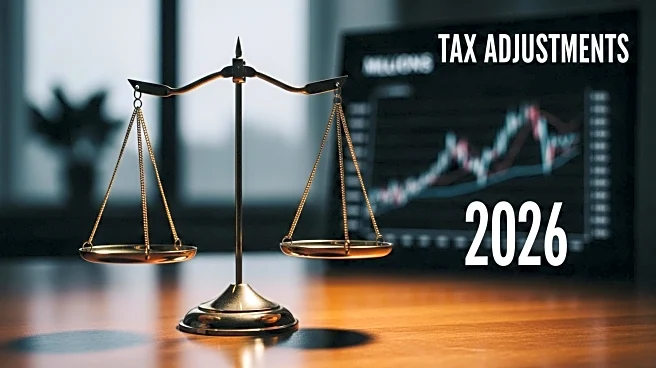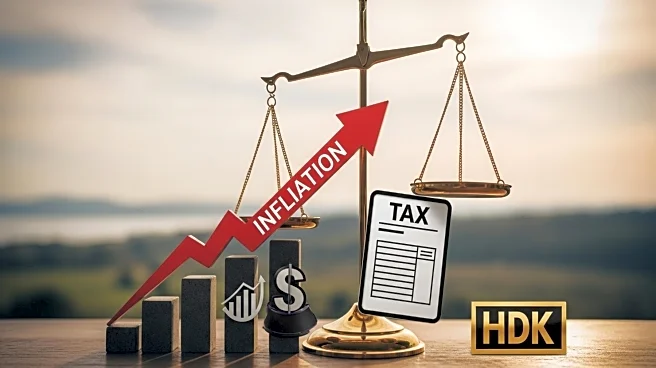What's Happening?
The Internal Revenue Service (IRS) has released inflation adjustments for the 2026 tax year, impacting over 60 tax provisions. These adjustments will apply to tax returns filed in 2027. Key changes include an increase in the standard deduction to $32,200 for married couples filing jointly, $16,100 for single taxpayers, and $24,150 for heads of household. The top marginal tax rate remains at 37% for single taxpayers with incomes over $640,600 and $768,700 for married couples filing jointly. Other tax rates are adjusted accordingly. The Alternative Minimum Tax (AMT) exemption amount for unmarried individuals is set at $90,100, with phase-out beginning at $500,000. Estates of individuals who die in 2026 will have a basic exclusion amount of $15 million. The maximum adoption credit increases to $17,670, and the Earned Income Tax Credit for qualifying taxpayers with three or more children rises to $8,231. Additionally, the maximum employer-provided child care tax credit is significantly increased to $500,000.
Why It's Important?
These adjustments are crucial as they reflect the IRS's response to inflation, ensuring that tax provisions remain relevant and equitable. The changes in standard deductions and tax credits can significantly impact taxpayers' financial planning and obligations. For instance, the increase in the standard deduction may reduce taxable income for many, potentially lowering tax liabilities. The adjustments to the Earned Income Tax Credit and adoption credit can provide additional financial relief to qualifying families. Businesses may benefit from the increased child care tax credit, encouraging them to offer more support to employees with children. Overall, these changes aim to maintain the purchasing power of taxpayers and provide incentives for specific financial behaviors.
What's Next?
Taxpayers and businesses will need to adjust their financial strategies to align with these new provisions. Financial advisors and tax professionals are likely to update their guidance to clients, ensuring compliance and optimization of tax benefits. The IRS will continue to monitor economic conditions and may make further adjustments if inflation trends change. Taxpayers should stay informed about these changes to maximize their tax benefits and avoid potential penalties. Additionally, businesses may explore opportunities to enhance employee benefits in light of the increased child care tax credit.
Beyond the Headlines
The adjustments reflect broader economic trends and the government's approach to managing fiscal policy in response to inflation. These changes may influence consumer spending and saving behaviors, as taxpayers adjust to new tax liabilities and benefits. The increased focus on child care credits highlights ongoing efforts to support working families, potentially impacting workforce participation rates. Long-term, these adjustments may contribute to shifts in economic inequality, as they provide targeted relief to specific groups.










